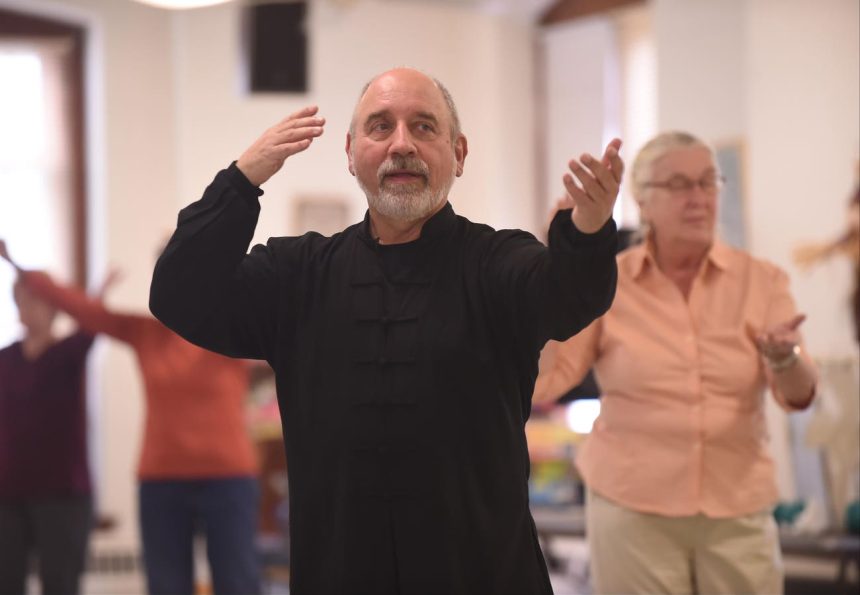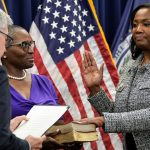Most of us know some older person who had a bad fall and broke a hip. When they do recover, they are not the same as before. And in some cases, the fall leads to a cascade of bad outcomes, surgery, complications, and loss of independence. What can aging parents do about this? Can adult children help them?
It’s Not Just Luck If They Don’t Fall
Balance is affected by aging, as most of us understand. But what keeps a person from hitting the ground, rather than regaining balance when they trip or stumble? Not everyone thinks of practicing balance as a daily necessity. But, just as it is with good nutrition, hydration, and regular exercise, balance exercises are indeed a daily necessity. Our brains respond to training of all kinds. We build habits by training ourselves to do a lot of things. Repetition is key. And what aging parent you know says they practice balancing every day? Probably almost none! Even for those who do exercise, perhaps at a gym, or taking water aerobics, or doing regular walking, those usual things alone may not be enough to prevent a fall.
Balance Training
The good news about training one’s self to balance and prevent falls is that the exercises are not vigorous. They won’t get a person out of breath. They can be done at home. They don’t take a lot of time. They don’t require any special clothing or equipment. All one needs is something sturdy to hold onto, and perhaps a chair as well. There are many videos available online for free for older adults demonstrating these balancing exercises. They are done by respected institutions like Johns Hopkins, Mayo Clinic as well as tax funded government entities, like NIH. They are short or long depending on how much a person wants to learn at once. If your aging parents don’t use the internet, there are charts also available, illustrating how to do the exercises for balance with drawings.
Somber Statistics
According to the National Institutes on Health, about 60% of those elders who fall and get injured do not regain the independence they had even after recovering from a fall. If you, or your aging loved ones don’t want to face possible permanent disability after a fall, it’s time to pay attention to the simple but effective prevention strategies. Falls are very common in older adults and your aging parents are at risk. Everyone over 65 is. About one in four in this age group has a fall every year.
What Can Adult Children Do To Help Prevent Aging Parents From Falling?
Here are a few steps we at AgingParents.com urge everyone who has an aging loved one to consider:
1. Ask them to start doing fall prevention exercises every day and explain why. When older folks go to the doctor, the focus is on their illnesses, medications, and treatments. It’s not likely to be all about fall prevention unless they already took a fall and got hurt. Our medical system is unfortunately more reactive than proactive most of the time.
2. Find an easily understood video on YouTube, or other non-digital source if needed and cue it up for your aging loved one or show it to them. Sit with them, watch together, and see if you can get them to buy in to the idea that this will protect their independence. Most elders fear “being put in a home”. That gives you leverage in discussing prevention. For example, “Mom, Dad, we never want to see you lose your independence or have to go somewhere you don’t want to be. How about getting into these balance exercises so you can stay where you are?”
3. Pitch the idea that if they can prevent falling and getting injured, it will keep them from becoming a burden on YOU. Most parents don’t want to be a burden to their children. That notion can be persuasive as it hits an emotional part of the elder’s mindset.
4. Do a house inspection yourself. As a former public health nurse, I made thousands of home visits. Many were to isolated elders. With elders at home, I looked for a lot of risk factors and found them often. Look: Is there adequate lighting everywhere? If not, that’s an easy fix. Install it where needed. Are there throw rugs? Get rid of them, as they cause tripping all too often. Are there grab bars in the bathroom? Again, not a difficult thing to install. Are there handrails at every set of steps or stairs? Those are needed, particularly in older dwellings when outdated building codes did not require them.
Takeaways:
Aging parents are not typically thinking about fall prevention in their daily lives. There are some good exceptions among those who go to the local gym or senior center and take fall prevention classes. But for everyone else, family can do a lot to raise their consciousness. Consider in your own aging loved ones how aging itself increases the risk of falls. Decreased vision, side effects from medications, cognitive decline and joint problems are all factors in play. Family can do a lot to increase awareness of how to prevent falls, show them resources, remind them to do the exercises and keep encouraging them often. The effort you make can benefit you, in helping them stay independent. It can possibly free you from the burden of increased caregiving that looms after a fall and injury.
Read the full article here




